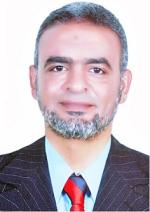


Theme
Accreditation/International dimensions of medical education
Category
Accreditation/Quality assurance
INSTITUTION
COLLEGE OF MEDICINE

The quality of the medical education environment has frequently been identified as crucial to effective learning. The main aims were to make sure medical schools meet the outcomes in Tomorrow's Doctors, to identify concerns and help to resolve them, and to promote equality and diversity in medical education.
It is a descriptive study and it is a part of medical education project funded number 193/429 by the Taibah University Deanship of Scientific Researches. A self administered, anonymous, reliable questionnaire of the Liaison Committee on Medical Education (LCME) to all staff members of the academic and clinical departments involved in the academic year 2008/2009 in College of Medicine, Taibah University, AL-Madinah AL-Munawarah, Kingdom of Saudi Arabia. The questionnaire is the nationally recognized accrediting authority for medical education programs leading to the Medical Degree and is sponsored by the Association of American Medical Colleges and the American Medical Association.
The questionnaire was completed by 19 departments, 14 of them were in the male section. The mean total score percentage was 62.06% indicating relative satisfaction with the environment, but with more negative and poor impression in the presence of plenty of problems in different areas of the evaluation items. There were no individual areas of excellence.
|
Females section Departments |
Score |
Percentage |
|
383 |
58.03 |
|
|
PEDIATRICS |
460 |
69.69 |
|
PHYSIOLOGY |
411 |
62.27 |
|
GYN & OBST |
382 |
57.88 |
|
COMMUNITY |
405 |
61.36 |
|
Percentage of the total score |
2041 |
61.85 |
Table 1 shows different departments in the females’ section total score and percentage (in all items of evaluations)
|
Males section Departments |
Score |
Percentage % |
|
MEDICAL EDUCATION |
495.00 |
75.00 |
|
COMMUNITY |
476.00 |
72.12 |
|
FORENSIC |
449.00 |
68.03 |
|
PARASITOLOGY |
337.00 |
51.06 |
|
SURGERY |
433.00 |
65.61 |
|
COMMUNITY |
420.00 |
63.64 |
|
PARASITOLOGY |
492.00 |
74.55 |
|
BIOCHEMISTRY |
380.00 |
57.58 |
|
PHYSIOLOGY |
384.00 |
58.18 |
|
PATHOLOGY |
383.00 |
58.03 |
|
PEDIATRICS |
379.00 |
57.42 |
|
MICROBIOLOGY |
382.00 |
57.88 |
|
ANATOMY |
349.00 |
52.88 |
|
GYN & OBST |
375.00 |
56.82 |
|
Percentage of the total score |
5734 |
62.06 |
Table 2 shows different departments in the males’ section total score and percentage (in all items of evaluations)
The local circumstances is indicating that we are in need for more development of the educational program.
This research was supported by the grant No. 193-429 from the Deanship of Scientific Research, Taibah University, AL-Madinah AL-Munawarah, Kingdom of Saudi Arabia. We would like to thank all of our colleagues who helped carry out this research, as well as their participation.
1) Accreditation and the Liaison Committee on Medical Education (1998) Functions and Structure of a Medical School, Standards for Accreditation of Medical Education Programs Leading to the M.D. Degree (Washington, D.C., Association of Medical Colleges and the American Medical Association).
2) Accreditation and the Liaison Committee on Medical Education (1998) Functions and Structure of a Medical School.
3) American Medical Association (1993) The Potential Impact of Health System Reform on Medical Education (Working Group on Medical Education and Health System Reform, Office of Medical Education).
4) Association for Medical Education in Europe (1996) AMEE Education Guide No. 7: Task-based Learning: An Educational Strategy for Undergraduate, Postgraduate and Continuing Medical Education (Dundee, Scotland, AMEE).
5) Association for Medical Education in Europe (1999) A Critical Appraisal of Medical Education. Abstracts of AAME Conference, Linkpoing, Sweden, 29 August to 1 September 1999 (Dundee, Scotland, AMEE).
6) Association for Medical Education in Europe (1999) AMEE Education Guide No. 14: Outcome-based Education (Dundee, Scotland, AMEE).
7) Association of American Medical Colleges (1984) Physicians for the Twenty-First Century, The GPEP Report, Report of The Panel on the General Professional Education of the Physician and College Preparation for Medicine (Washington, D.C., AAMC).
8) Association of American Medical Colleges and American Medical Association (1997) Guide to the Institutional Self-Study - Program of Medical Education Leading to the MD Degree (Chicago, IL and Washington, D.C., Liaison Committee on Medical Education).
9) Association of American Medical Colleges and American Medical Association (1998) The Role of Students in the Accreditation of U.S. Medical Education Programs (Chicago, IL and Washington, D.C., Liaison Committee on Medical Education).
10) Association of American Medical Colleges and American Medical Association (1998) Rules of Procedure (Chicago, IL and Washington, D.C., Liaison Committee on Medical Education).
 Send Email
Send Email